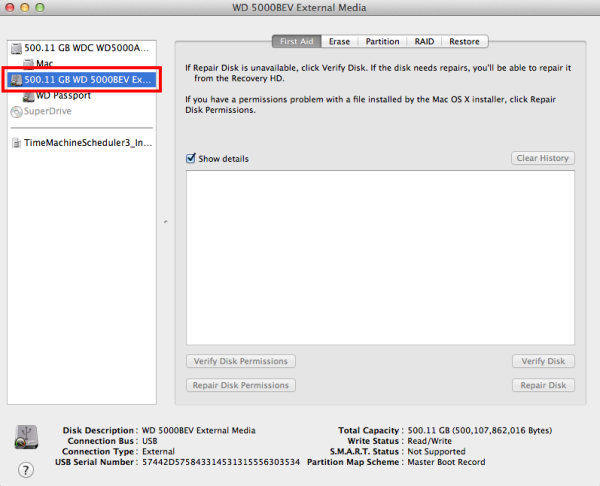External Hd For Mac Os X Tiger
Jan 11, 2006 I have several FireWire HDs attached to my Mac and I could install OS X Tiger 10.4 on all of them except for one Seagate disk. The installer says it. Rar downloader for mac 2017.
I’m not most users, and as a Low End Mac reader, odds are that you aren’t either. You like to plan ahead. You like to play it safe. You like to experiment. And maybe you even do regular backup. Backup was one of my reasons for partitioning when I put a 270 MB hard drive in my, the 20 MHz Mac I used when I began Low End Mac over a decade ago. With a Zip drive, I could back up each of my three partitions to a different 100 MB Zip disk (remember those?).
In an ideal world, sysadmins everywhere would only need to manage one or two operating systems—one desktop, one server—and nothing else. Unfortunately, business operations often dictate a different method than that, leaving it up to IT to bridge the gaps caused by fragmentation between multiple OS, hardware, and software instances.
External Hdd For Mac Os X Tiger Download

Bottom line: a generic fixed-speed external USB floppy drive will work with 1.4 MB HD floppies, yet (to the best of my knowledge, and i may be wrong) not Mac 800k or 400k floppies. They’ll likely also read 720k DS floppies. My guess would be that they could read 360k SS floppies from other systems. (I don’t have/could not easily make a 360k floppy to test this theory.) Unless you can find an external USB drive that specifically claims to support Mac 800k disks (i really doubt you will find one that supports 400k), you will almost certainly need to find an older Mac with a built-in floppy drive to access your data on DS and SS disks.
Mac Os X Tiger For Ppc
• Then I’ll copy all my important files to the Passport HD in preparation for the Mac OS upgrade. • Next, I’ll disconnect the the Passport HD. • The Mac OS upgrade will be next, Tiger 10.4.11 —> Leopard 10.5.6. • Then bring Leopard up to its last release, 10.5.8. 8. Then if all is well with the OS upgrade, connect the Passport HD and dump all the saved files.
How did Apple do this? By using a variable-speed spindle drive system instead of fixed-speed, to cram more data on the same magnetic material space. That is why Mac floppy drives make sounds of different audible pitches as they move around the disk surface: the motor speed is changing! As of the emergence of high-density (HD) floppies in the early 1990s, Apple was growing weary of being slammed around in the marketplace. One of many, many causes was the higher price of Macintosh computers. While there were many reasons for this, one was Apple’s penchant to innovate and improve upon the standards. As the Wintel juggernaut began to steamroll them, Apple sought ways to cut costs.
By late 2006, the 10.4.8 kernel had been cracked. At San Francisco 2006, Jobs announced the immediate availability of Mac OS X v10.4.4, the first publicly available release of Tiger compiled for both PowerPC and Intel x86-based machines. • (Press release). April 28, 2005.
As I've said before, for me. At one point, I realized that there were plenty of files on my Mac that I didn't need any more, but too many to delete individually. In other cases, your Mac can be experiencing some major malfunctions: constant crashing, locked controls, slow boot times, missing files, etc. Often, the best option to fix these problems would be to reformat your computer and reinstall your OS, but since most of us don't plan on ever taking this drastic measure, we don't obtain a recovery disc or thumb drive. Thankfully, the geniuses over at Apple have made the process easy for us—no need for a disc; no need for a drive—all you need is a decent internet connection.